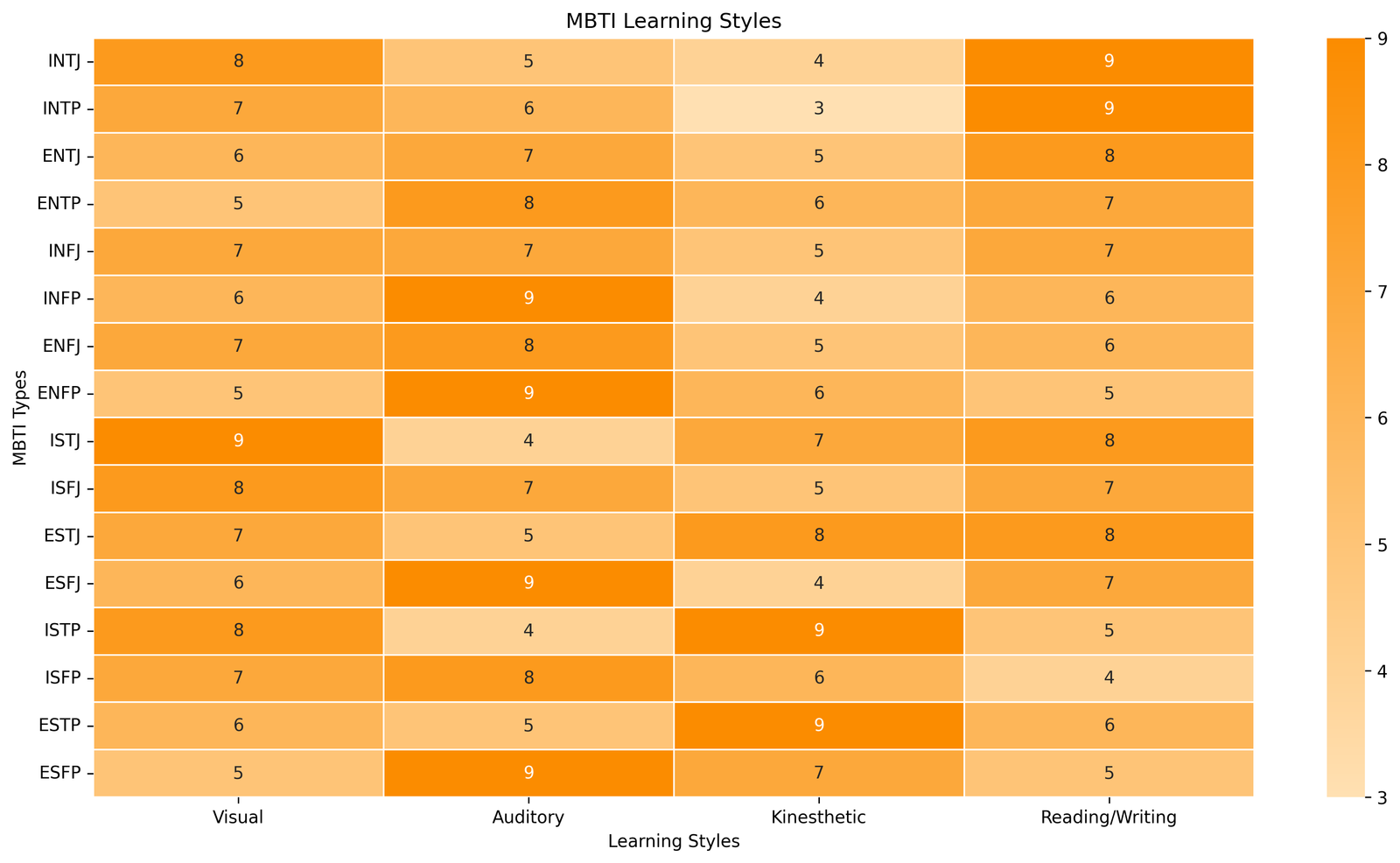
MBTI Learning Styles describe the preferential ways in which individuals absorb, process, and retain new information. Learning styles can be influenced by one's MBTI personality type, affecting how they prefer to engage with material, concepts, and experiences in a learning environment.
Understanding these styles can enhance educational strategies and personal growth efforts.
Visual learners prefer to see information in order to learn best. They benefit from diagrams, charts, and written directions. Types with a Sensing preference, like ISTJ or ISFJ, may often be visual learners, appreciating concrete, visual representations of information.
An ISTJ student might use mind maps to organize their study material and visualize the relationships between concepts.
Auditory learners absorb information more effectively when they hear it. They may prefer lectures, discussions, and verbal instructions. Extraverted types such as ESFJ and ENFJ may be inclined to auditory learning, as they often process information by talking it through.
An ENFJ might benefit from participating in group discussions where they can listen to and process information through dialogue.
inesthetic learners need to physically engage in activities to learn best. They prefer hands-on experiences and active involvement. Perceiving types, particularly those with a Sensing preference like ESTP or ISTP, may favor kinesthetic learning, enjoying the process of discovery through doing..
An ESTP might excel in a workshop where they can physically manipulate tools and materials to understand how things work.
Reading/Writing learners engage with written words in texts and notes. They learn well by reading material and summarizing it in writing. Intuitive types, such as INTP and INTJ, may be drawn to this learning style, often preferring to delve deeply into theory and abstract concepts through extensive reading and reflective writing.
An INTJ could find it most effective to learn by researching and writing detailed essays on topics of interest.